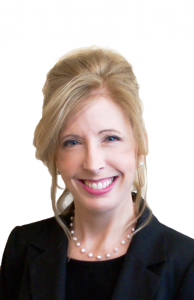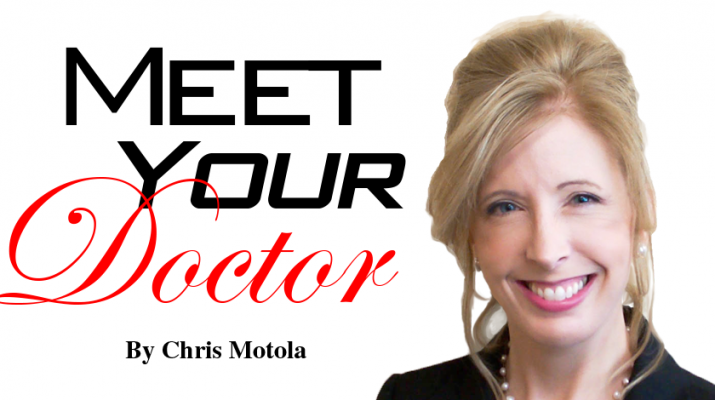Head of the Wound Healing Center at St. Ann’s discusses the multifaceted approach to wound care
By Chris Motola
 Q: Wound care tends to conjure up images of bandages, ointments, and maybe stitches, but I’m guessing there’s a lot more than that at Rochester General Wound Healing Center.
Q: Wound care tends to conjure up images of bandages, ointments, and maybe stitches, but I’m guessing there’s a lot more than that at Rochester General Wound Healing Center.
A: Wound centers are kind of a national phenomenon that entered the market fairly recently, maybe 10 to 15 years. Ours opened in 2014. We see people with chronic wounds. The body is amazingly resilient, so most people who stub their toe or get a scratch heal with little to no medical intervention. A wound center is geared toward people who have very serious wounds and usually some underlying comorbidities that make it difficult for that wound to heal.
Q: What are some of those issues?
A: Many of our patients are either older in age and have a host of medical problems that affect their healing, or they have advanced diabetes, or people who have issues from swelling due to previous blood clots or obesity. And people who just have poor circulation and develop problems due to poor blood flow, particularly to their legs. So we try to come up with comprehensive plans to heal those wounds.
Q: What do those plans entail?
A: Our initial goal is always to heal those wounds, but they may have such profound disease or such complicated wounds that our goal becomes more about keeping it from growing and keeping it from getting infected. So there’s an individual goal set for every patient. The approach is multifaceted. There are some major, general things that affect healing, like nutrition. If someone isn’t eating enough protein or getting the right vitamins, we can give them advice or refer them to a dietitian. Some wounds are affected by pressure and positioning. So we’ll look at how to offload wounds using cushions, devices and compression gear. Some wounds are due to poor blood flow, so sometimes we’re working with vascular surgery or vascular cardiology on how to improve blood flow if that’s possible. Some people need infection control, so we may need an antibiotic. Some people need weight reduction.
Q: How does obesity affect wounds?
A: Say you’re obese and have very swollen legs from obesity. We can heal the wound by using compression bandages on your legs, but if you don’t lose weight, as soon as you remove those compression bandages the legs will swell back up again.
Q: Is the tearing literally due to swelling
A: When your blood has to return to the heart, it has to pump against gravity. If the person is particularly obese, the veins can dilate and it can become harder to pump the blood. So sometimes you’ll see people with varicose veins. But over time you can get seepage into the legs, causing them to swell and become discolored. The skin can stretch to such an extent that the skin can actually crack open or blister. The legs can end up weeping fluid. So we have to get the swelling down, which we can do through diuretics, but the main way we do it is through compression bandaging. So we do a lot of types of compression bandaging to decrease the swelling and allow the skin to heal. But if you don’t address the causes, then it can come back once you remove the compression.
Q: What effect does diabetes have?
A: Poorly controlled diabetes is the enemy of wound healing. So we work with patients to set reasonable goals for their diabetes, medicine compliance, education and referrals to specialist. The mainstay of the wound is treating the underlying causes of the wound, not the dressing.
Q: And older patients?
A: With the older patients we see a lot of pressure ulcers. The older patients may not be as mobile, or they may have a fracture after a fall and not be able to walk normally. They also tend to be working on gaining weight for a host of reasons. We see people with bad blood flow to their legs who are older. Peripheral arterial disease goes hand-in-hand with atherosclerosis, which we all develop to varying degrees as we age. So we see those issues in our older population.
Q: When you can completely heal the wound, what factors are in play?
A: Good nutrition, good blood flow, good diabetic care, dressings that keep the wound not wet, not dry, but moist. Antibiotic care if necessary. Those are the main things. We do have some advanced therapies as well like artificial skins. Sometimes we have to remove necrotic tissue to promote healing. Most of our patients do heal their wound, but it can take some time. It typically takes a few months, so it’s not fast by the standards people are probably used to.
Q: Artificial skins?
A: It’s probably a misnomer, but there are a number of products on the market that can help with granulation. Granulation is the sort of tissue that grows into a wound to help it close. Some of them have skin cells embedded in them, some don’t. We call them biologics, because they have some element of either collagen, which is what the body needs to lay down to heal a wound, or they have some other factor in them that helps promote healing.
Q: How does wound care fit into your broader practice?
A: I think the reason I got into wound care was because in an older, frail population wounds are fairly common. The skin is the largest organ, so if all of your other organs are taking damage over time, it’s no surprise that your skin is, too. So working with that population in a nursing home, I would find people with serious-looking wounds. I didn’t think my training had equipped me to deal with some of these wounds. So I was very lucky to have a nurse who was skilled at wound care. Together, we decided to improve the way we handled wounds at St. Ann’s. That took us about five years to do. We honed our protocol and formulary. As we did that, we realized there was an opportunity to provide care to elderly living in the community, as well as younger patients who need comprehensive wound care. We were able to partner with Rochester Regional and open the center.
Lifelines
Name: Kim K. Petrone, M.D.
Position: Medical director of St. Ann’s Home, medical director of Rochester General Wound Healing Center
Hometown: Henrietta
Education: University of Rochester School of Medicine (medical degree); Duke University, bachelor’s degree in psychology
Affiliations: Rochester Regional Health
Organizations: American Geriatric Society, American Medical Directors’ Association, Undersea and Hyperbaric Medical Society
Family: Husband (Steve), son (Cooper)
Hobbies: Reading, swimming, gardening

